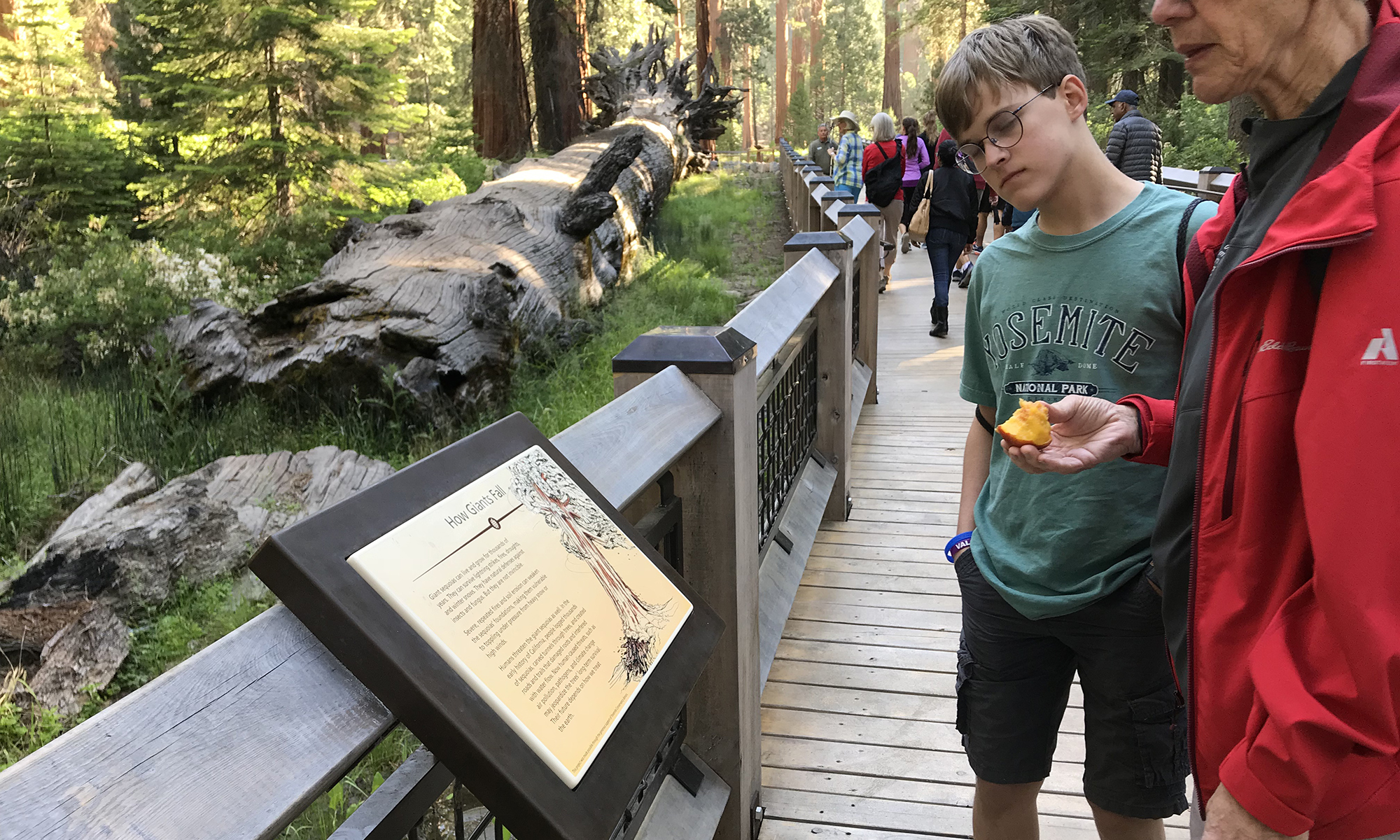A kind of peace has settled over Mariposa Grove in Yosemite National Park during the last three years. As a result of the most extensive renovation project in the park’s history, the impact of humans has been scaled back and the sequoias (Sequoiadendron giganteum) once again dominate their special sanctuary.

While people have been invited back in now, it’s more on the forest’s terms. There’s an elevated walkway where a road once carried trams of visitors, and parking areas and the gift shop have been moved two miles down the road to the south entrance area. Now when you enter the grove, instead of traffic and congestion, you’re met by the sound of birds, the smells of the forest, and the beautiful imposing presence of the trees.
Removal of pavement and heavy traffic has relieved pressure on the big trees’ shallow root systems. The flow of water through the grove — so essential to the sequoia’s survival — has been improved and their habitat has been restored.
We recently visited the grove — just after it was reopened — to check out the new interpretive component in particular. Tom contributed illustrations to the panels through his work with Leslie Stone Associates. As always Leslie produced simple and elegant interpretation that seems to fit just right with the setting — it was quite a thrill to see the end result!

interpretive design Leslie Stone Associates

Mariposa Grove of Giant Sequoias, Yosemite National Park
Yosemite Mariposa Grove, OpenRoad with Doug McConnell (video)





































